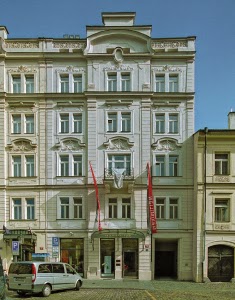Hotel:
- Maximilian (Golden Tulip chain) Link to my review
Restaurants:
- Reykjavyk Link to my review
- Dim U Minuty Link to my review
- U Orloje Link to my review
- U Prince Link to my review
- U Zlateho Hada Link to my review
- U Zlateho Stromu Link to my review
Activities:
- Charles Bridge
- Prague Castle
- Astronomical Clock
I just returned from Prague
on 10/4/04, a little over a week ago. It was the most beautiful city! Beautiful
architecture, cobblestone streets and sidewalks, and all those red roofs! I
liked it because there wasn't a whole laundry list of things to see like in
Paris or Rome. We concentrated on the Royal Route from the Powder Tower in
Stare Mesto across the Charles Bridge and to the castle in Mala Strana. We
spent a lot of time sitting in outdoor cafes (primarily in Old Town Square)
having drinks or meals and just watching the world go by. Note that although
this trip was taken in late September/early October, we couldn't have eaten
outside anywhere that didn't have those huge heaters--it was chilly! There were
many other things to do: museums, shopping, heading out to the countryside to
visit other castles like Karlstejn and Konopiste, but we were content to stay
in the city and relax. We spent four days there. It was easy to walk
everywhere--we didn't need to use the metro. Everyone spoke English, and
everywhere we ate had menus translated into at least five different languages.
I would highly recommend Prague.




































